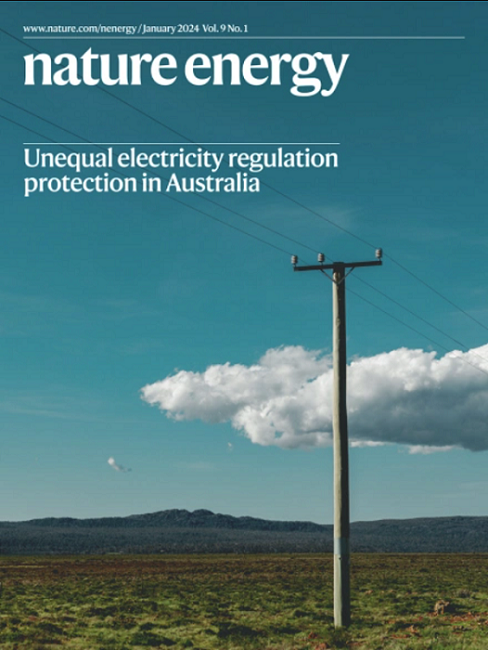具有过量锂和稳定循环的集成式岩盐-聚阴离子阴极
IF 49.7
1区 材料科学
Q1 ENERGY & FUELS
引用次数: 0
摘要
不含钴、镍的无序盐阴极利用氧氧化还原提高了锂离子电池的能量密度,但要在高电压 4.5 V(相对于 Li/Li+)条件下实现良好的循环寿命却很困难。在此,我们报告了一系列富含锰的锂离子阴极,它们融合了盐岩和聚阴离子型结构。按照阳离子填充和排序的设计规则,我们展示了将多阴离子基团批量纳入岩盐晶格的过程。这种整合连接了锂离子电池阴极的两个主要系列--层状/尖晶石和磷酸盐氧化物--大大提高了无序岩盐阴极在 4.8 V 上限截止电压下的循环稳定性。该阴极显示出高于 1,100 Wh kg-1 的高重力能量密度和 70% 的 100 次循环保持率。这项研究为利用锰和铁等地球富集元素开发电池阴极开辟了广阔的成分空间。本文章由计算机程序翻译,如有差异,请以英文原文为准。


Integrated rocksalt–polyanion cathodes with excess lithium and stabilized cycling
Co- and Ni-free disordered rocksalt cathodes utilize oxygen redox to increase the energy density of lithium-ion batteries, but it is challenging to achieve good cycle life at high voltages >4.5 V (versus Li/Li+). Here we report a family of Li-excess Mn-rich cathodes that integrates rocksalt- and polyanion-type structures. Following design rules for cation filling and ordering, we demonstrate the bulk incorporation of polyanion groups into the rocksalt lattice. This integration bridges the two primary families of lithium-ion battery cathodes—layered/spinel and phosphate oxides—dramatically enhancing the cycling stability of disordered rocksalt cathodes with 4.8 V upper cut-off voltage. The cathode exhibits high gravimetric energy densities above 1,100 Wh kg−1 and >70% retention over 100 cycles. This study opens up a broad compositional space for developing battery cathodes using earth-abundant elements such as Mn and Fe. Energy density and cyclability are often a trade-off for lithium-ion batteries. The authors develop cobalt- and nickel-free cathodes with both good cycling stability and high energy density through the integration of polyanion units into rocksalt structures.
求助全文
通过发布文献求助,成功后即可免费获取论文全文。
去求助
来源期刊

Nature Energy
Energy-Energy Engineering and Power Technology
CiteScore
75.10
自引率
1.10%
发文量
193
期刊介绍:
Nature Energy is a monthly, online-only journal committed to showcasing the most impactful research on energy, covering everything from its generation and distribution to the societal implications of energy technologies and policies.
With a focus on exploring all facets of the ongoing energy discourse, Nature Energy delves into topics such as energy generation, storage, distribution, management, and the societal impacts of energy technologies and policies. Emphasizing studies that push the boundaries of knowledge and contribute to the development of next-generation solutions, the journal serves as a platform for the exchange of ideas among stakeholders at the forefront of the energy sector.
Maintaining the hallmark standards of the Nature brand, Nature Energy boasts a dedicated team of professional editors, a rigorous peer-review process, meticulous copy-editing and production, rapid publication times, and editorial independence.
In addition to original research articles, Nature Energy also publishes a range of content types, including Comments, Perspectives, Reviews, News & Views, Features, and Correspondence, covering a diverse array of disciplines relevant to the field of energy.
 求助内容:
求助内容: 应助结果提醒方式:
应助结果提醒方式:


